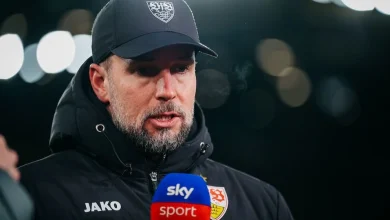Data-backed NFL bets: The numbers back the Cowboys at -2.5

- Get PFF+ for 40% off: Use promo code BLACKFRIDAY to unlock the PFF Player Prop Tool, Premium Stats, fantasy dashboards, the PFF Mock Draft Simulator, industry-leading fantasy rankings and much more — everything you need to win your season.
Many NFL bettors start by looking at individual markets — like spreads, totals, teasers or props — and ask, “Which spread looks good?” or “What totals stand out this week?” This is a bottom-up approach, focusing on specific bets first.
In this space, we’ll take a different approach. We’ll focus on one game each week and use a top-down strategy to break it down. This means starting with the bigger picture — how teams, players or trends are performing — and then finding the best ways to apply that information to different betting markets.
While some of our bets may focus on traditional markets, like spreads or totals, we’ll often explore other opportunities to maximize value.
Dallas Cowboys -2.5 vs. Philadelphia Eagles
As always, we’ll start by examining the team fundamentals and how this matchup is priced, laying the foundation for the rest of our analysis.
Here we have a chart from PFF’s Timo Riske that weights offensive and defensive efficiency toward more recent performance. For the Eagles, the picture is clear: a league-average offense paired with a defense playing at one of the highest levels in the NFL. The Cowboys are the inverse — one of the league’s better offenses paired with a defense that has graded among the worst.
At a spread of Eagles -3 (plus home-field advantage baked in), the market is effectively treating Philadelphia’s defense as the best unit in the NFL and Dallas’ defense as one of the weakest. That’s a steep expectation baked directly into the line.
And a look at Inpredictable — which uses market lines and look-ahead numbers to build team ratings — reinforces the same story: the Eagles are graded as the NFL’s best defense by a wide margin, while the Cowboys sit near the bottom.
But even if the market is assigning Philadelphia a “No. 1 defense” label that isn’t fully supported by their production — even when accounting for Nolan Smith’s health and the addition of Jalen Phillips — this particular matchup still tilts toward Dak Prescott mitigating what the Eagles do best.
Philadelphia leads the NFL in tight-window throws forced and in defensive EPA generated on those throws, but this is exactly the kind of matchup where Dak Prescott tends to thrive.
The Cowboys quarterback has consistently been one of the league’s best quarterbacks on tight-window throws — top five in EPA on those attempts — and he’s been nearly five times more efficient than the baseline the Eagles have faced this season.
On the other side of the ball, Dallas’ defense is far healthier and now features Quinnen Williams, who ranks third among all defensive linemen in PFF grade. Over the past month, that group has played at a top-12 level in EPA allowed per play, with similar strength against both the run and the pass — a sharp contrast to the 31st-ranked defense the market is pricing in.
And for the Eagles, they will likely be without Lane Johnson, who has been an essential piece of their offensive success.
Johnson has been one of the league’s best pass blockers and is routinely left on an island, but his replacement, Fred Johnson, owns a 55.0 PFF pass-block grade this season after posting a 48.0 last year.
That creates a major weak link for an Eagles offense built around quarterback Jalen Hurts, who is sensitive to pressure. And while on/off splits can be noisy, the difference here is notable: across roughly 330 dropbacks without Lane Johnson, the Eagles have produced a -0.07 EPA per play compared to 0.14 EPA per play when the veteran tackle is on the field.
This matchup also comes against a Dallas defense that has quietly become one of the league’s better disruption units, generating pressure at the sixth-highest rate in the NFL over the last month. Hurts has managed only -0.4 EPA per play under pressure this season.
Add it all up, and this looks like a spot where the Dallas offense is being mispriced relative to the matchup, particularly given Prescott’s ability to attack tight-window looks — where the Eagles derive most of their defensive value — and the fact that Philadelphia’s offense faces a tougher test than the market suggests without Lane Johnson and against an improving Cowboys defense.
As actual points in actual games, this sets up as a spot where Dallas can score and win with margin.





